Japan art and Tokuriki Tomikichiro: Buddhism, Shintoism, and Zen at war in China
Lee Jay Walker
Modern Tokyo Times
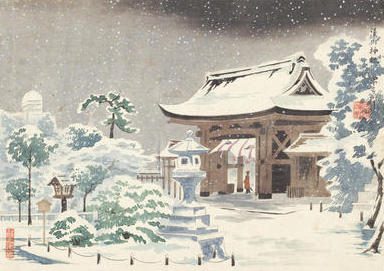
The Japanese artist Tomikichiro Tokuriki (1902-1999) was born in Kyoto. He came from a long line of artists within his family – going back hundreds of years. In this article, the images belong to a period when Japan was already occupying parts of China and include the timeframe of the Second Sino-Japanese War (1937-1945). This conflict is also called the War of Resistance in China. Therefore, the art in this article covers the mid-1930s to early 1940s period.

The British Museum says, “… In 1928 he studied ‘Nihonga’ painting under Tsuchida Bakusen (1887-1936) and Yamamoto Shunkyo (1871-1933) and exhibited with Kokuga Sosaku Kyokai, but about the same time in 1929 he changed to woodblock printing under the influence of Hiratsuka Un’ichi and began to contribute to the early print magazine ‘Han’. He was a member of Nihon Hanga Kyokai from 1932, and active in promoting ‘Sosaku Hanga’ in Kyoto.”
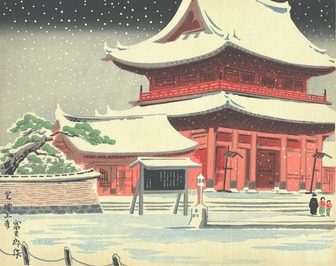
In this article, the artistic focus is on Buddhist and Shinto holy places. Hence, the serenity of the art – and the religious angle seem a million miles away from events in China. Naturally, Tokuriki’s world before America’s carpet bombing of Japan – although Kyoto was spared the same large-scale military strikes – was tranquil and based on continuity.
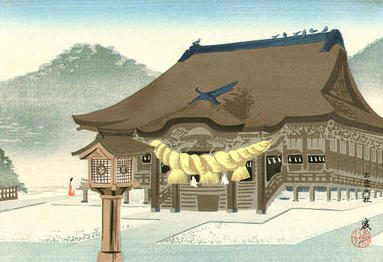
Tokuriki created stunning art throughout this traumatic period. Of course, Tokuriki is an artist and hundreds of thousands of Japanese civilians perished because of Japanese nationalist and imperialist forces – that committed mass evil against the people of China.
Other nations also witnessed the deeds of Japanese nationalist and imperialist forces. However, the bloodletting against the people of China stands out concerning the millions of people who perished. Therefore, events like the Nanjing Massacre against the Chinese (Tanka and others also butchered) and other brutal deeds must never be forgotten (even if upper echelons in the ruling Liberal Democratic Party in Japan seek to downplay this barbaric period).
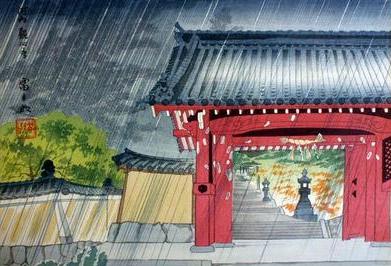
Zen Buddhist holy monks in Japan also glorified the killing of the Chinese, Koreans, Russians, and others. In the Book – Zen At War by Brian Victoria – he highlights the comments of leading Zen Buddhist monks who justified the bloodshed from Zen sects that include Rinzai and Soto.
Zen Master Harada Daiun Sogaku in 1939 said, “If ordered to march: tramp, tramp or shoot: bang, bang. This is the manifestation of the highest wisdom of enlightenment. The unity of Zen and war … extends to the farthest reaches of the holy war now under way.”
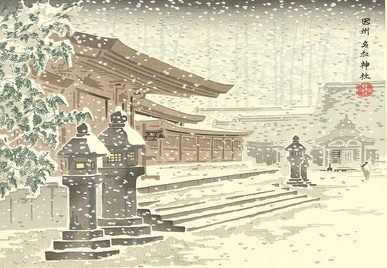
D. T. Suzuki, a distinguished Zen Buddhist monk – wrote during the same timeframe of the Nanjing massacre: “… the art of swordsmanship distinguishes between the sword that kills and the sword that gives life. The one that is used by a technician cannot go any further than killing… The case is altogether different with the one who is compelled to lift the sword. For it is really not he but the sword itself that does the killing. He had no desire to harm anybody, but the enemy appears and makes himself a victim. It is though the sword automatically performs its function of justice, which is the function of mercy…. the swordsman turns into an artist of the first grade, engaged in producing a work of genuine originality.”
Another Zen master, Seki Seisetsu (1877-1945), called for the “extermination of the red devils.” Hence, the killing of Communists in China and Japan.
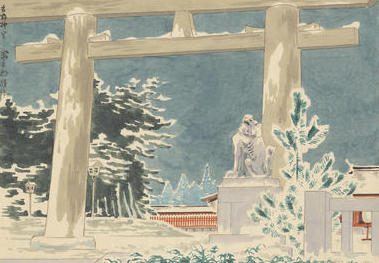
Sawaki Kodo (1880-1965) – a Soto Zen Buddhist monk – said, concerning his time in Russia as a soldier, that he and his comrades had happily “gorged ourselves on killing people.” In 1942, he said, “It is just to punish those who disturb the public order. Whether one kills or does not kill, the precept forbidding killing [is preserved]. It is the precept forbidding killing that wields the sword. It is the precept that throws the bomb.”
Ironically, unlike the Zen Buddhist monk D. T. Suzuki and other Zen Buddhist monks justifying the war, the artist Tokuriki focused on beauty, faith, serenity, and the richness of Japan. It is unbelievable that both shared the same period in the environs of Kyoto at certain times in their respective time on this earth. Thankfully, the artistic beauty of Tokuriki remains to highlight a different world where art can build bridges – provided it is depoliticized from the state apparatus.
https://www.baranstrategies.com/blog/2016/4/zen-holy-war

Modern Tokyo News is part of the Modern Tokyo Times group
http://moderntokyotimes.com Modern Tokyo Times – International News and Japan News
http://sawakoart.com – Sawako Utsumi and Modern Tokyo Times artist
https://moderntokyonews.com Modern Tokyo News – Tokyo News and International News
PLEASE JOIN ON TWITTER
https://twitter.com/MTT_News Modern Tokyo Times
PLEASE JOIN ON FACEBOOK